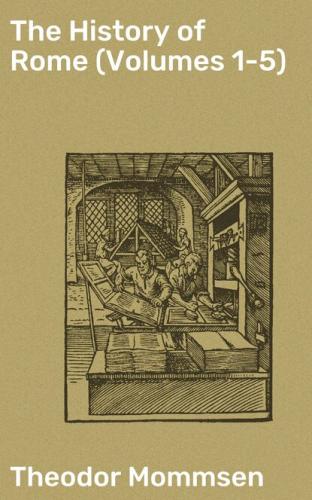Plastic Art in Italy
The plastic and delineative arts are more recent than architecture; the house must be built before any attempt is made to decorate gable and walls. It is not probable that these arts really gained a place in Italy during the regal period of Rome; it was only in Etruria, where commerce and piracy early gave rise to a great concentration of riches, that art or handicraft—if the term be preferred—obtained a footing in the earliest times. Greek art, when it acted on Etruria, was still, as its copy shows, at a very primitive stage, and the Etruscans may have learned from the Greeks the art of working in clay and metal at a period not much later than that at which they borrowed from them the alphabet. The silver coins of Populonia, almost the only works that can be with any precision assigned to this period, give no very high idea of Etruscan artistic skill as it then stood; yet the best of the Etruscan works in bronze, to which the later critics of art assigned so high a place, may have belonged to this primitive age; and the Etruscan terra-cottas also cannot have been altogether despicable, for the oldest works in baked clay placed in the Roman temples—the statue of the Capitoline Jupiter, and the four-horse chariot on the roof of his temple—were executed in Veii, and the large ornaments of a similar kind placed on the roofs of temples passed generally among the later Romans under the name of "Tuscanic works."
On the other hand, among the Italians—not among the Sabellian stocks merely, but even among the Latins—native sculpture and design were at this period only coming into existence. The most considerable works of art appear to have been executed abroad. We have just mentioned the statues of clay alleged to have been executed in Veii; and very recent excavations have shown that works in bronze made in Etruria, and furnished with Etruscan inscriptions, circulated in Praeneste at least, if not generally throughout Latium. The statue of Diana in the Romano-Latin federal temple on the Aventine, which was considered the oldest statue of a divinity in Rome,(21) exactly resembled the Massiliot statue of the Ephesian Artemis, and was perhaps manufactured in Velia or Massilia. The guilds, which from ancient times existed in Rome, of potters, coppersmiths, and goldsmiths,(22) are almost the only proofs of the existence of native sculpture and design there; respecting the position of their art it is no longer possible to gain any clear idea.
Artistic Relations and Endowments of the Etruscans and Italians
If we endeavour to obtain historical results from the archives of the tradition and practice of primitive art, it is in the first place manifest that Italian art, like the Italian measures and Italian writing, developed itself not under Phoenician, but exclusively under Hellenic influence. There is not a single one of the aspects of Italian art which has not found its definite model in the art of ancient Greece; and, so far, the legend is fully warranted which traces the manufacture of painted clay figures, beyond doubt the most ancient form of art in Italy, to the three Greek artists, the "moulder," "fitter," and "draughtsman," Eucheir, Diopos, and Eugrammos, although it is more than doubtful whether this art came directly from Corinth or came directly to Tarquinii. There is as little trace of any immediate imitation of oriental models as there is of an independently-developed form of art. The Etruscan lapidaries adhered to the form of the beetle or -scarabaeus-, which was originally Egyptian; but—scarabaei—were also used as models for carving in Greece in very early times (e.g. such a beetle-stone, with a very ancient Greek inscription, has been found in Aegina), and therefore they may very well have come to the Etruscans through the Greeks. The Italians may have bought from the Phoenician; they learned only from the Greek.
To the further question, from what Greek stock the Etruscans in the first instance received their art-models, a categorical answer cannot be given; yet relations of a remarkable kind subsist between the Etruscan and the oldest Attic art. The three forms of art, which were practised in Etruria at least in after times very extensively, but in Greece only to an extent very limited, tomb-painting, mirror-designing, and graving on stone, have been hitherto met with on Grecian soil only in Athens and Aegina. The Tuscan temple does not correspond exactly either to the Doric or to the Ionic; but in the more important points of distinction, in the course of columns carried round the -cella-, as well as in the placing of a separate pedestal under each particular column, the Etruscan style follows the more recent Ionic; and it is this same Iono-Attic style of building still pervaded by a Doric element, which in its general design stands nearest of all the Greek styles to the Tuscan. In the case of Latium there is an almost total absence of any certain traces of intercourse bearing on the history of art. If it was—as is indeed almost self-evident—the general relations of traffic and intercourse that determined also the introduction of models in art, it may be assumed with certainty that the Campanian and Sicilian Hellenes were the instructors of Latium in art, as in the alphabet; and the analogy between the Aventine Diana and the Ephesian Artemis is at least not inconsistent with such an hypothesis. Of course the older Etruscan art also served as a model for Latium. As to the Sabellian tribes, if Greek architectural and plastic art reached them at all, it must, like the Greek alphabet, have come to them only through the medium of the more western Italian stocks.
If,
